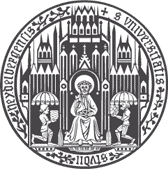
Semantic Relations
Kursbeschreibung
| Studiengang | Modulkürzel | Leistungs- bewertung |
|---|---|---|
| BA-2010[100%|75%] | CS-CL | 6 LP |
| BA-2010[50%] | BS-CL | 6 LP |
| BA-2010[25%] | BS-AC, BS-FL | 4 LP |
| NBA[100%|75%] | CS-CL | 6 LP |
| NBA[50%|25%] | BS-CL, BS-AC | 4 LP |
| Magister | - | - |
| Dozenten/-innen | Vivi Nastase |
| Veranstaltungsart | Proseminar |
| Erster Termin | 28.04.2016 |
| Zeit und Ort | Do, 16:15–17:45, INF 329 / SR 26 (SR) |
| Commitment-Frist | tbd. |
Teilnahmevoraussetzungen
keine
Leistungsnachweis
- 20% questions and participation
- 40% presentation
- 40% project or exam
Inhalt
Semantic relations describe how things interact or how they are related. We can find such relations in ontologies that capture knowledge about the world and how the objects in the world are related, and in texts where entities and their relations and interactions are mentioned. We need both these sources of semantic relations -- we can use texts to populate ontologies, and we can use ontologies to make sense of new texts.
The course will focus mostly on semantic relations between nominals, and we'll explore these relations from both a theoretical and a practical perspective. The theoretical exploration sketches the historical path which has brought us to the contemporary view and interpretation of semantic relations. We will discuss a wide range of relation inventories proposed by linguists and by language processing people. Such inventories vary by domain, granularity and suitability for downstream applications.
On the practical side, we will investigate the recognition and acquisition of relations from texts. For supervised learning methods, we will review some of the available datasets, the variety of features which can describe relation instances, and learning algorithms found appropriate for the task. Next, we'll look into weakly supervised and unsupervised learning methods of acquiring relations from large corpora with little or no previously annotated data. We will see how enduring the bootstrapping algorithm based on seed examples or patterns has proved to be, and how it has been adapted to tackle Web-scale text collections. We also see a few machine learning techniques which can perform fast and reliable relation extraction by taking advantage of data redundancy and variability.
We will look at other semantic relations that serve to organize knowledge -- such as entailment relations -- and how they fit into the semantic relation landscape.
Kursübersicht
Seminarplan
| Datum | Sitzung | Materialien |


